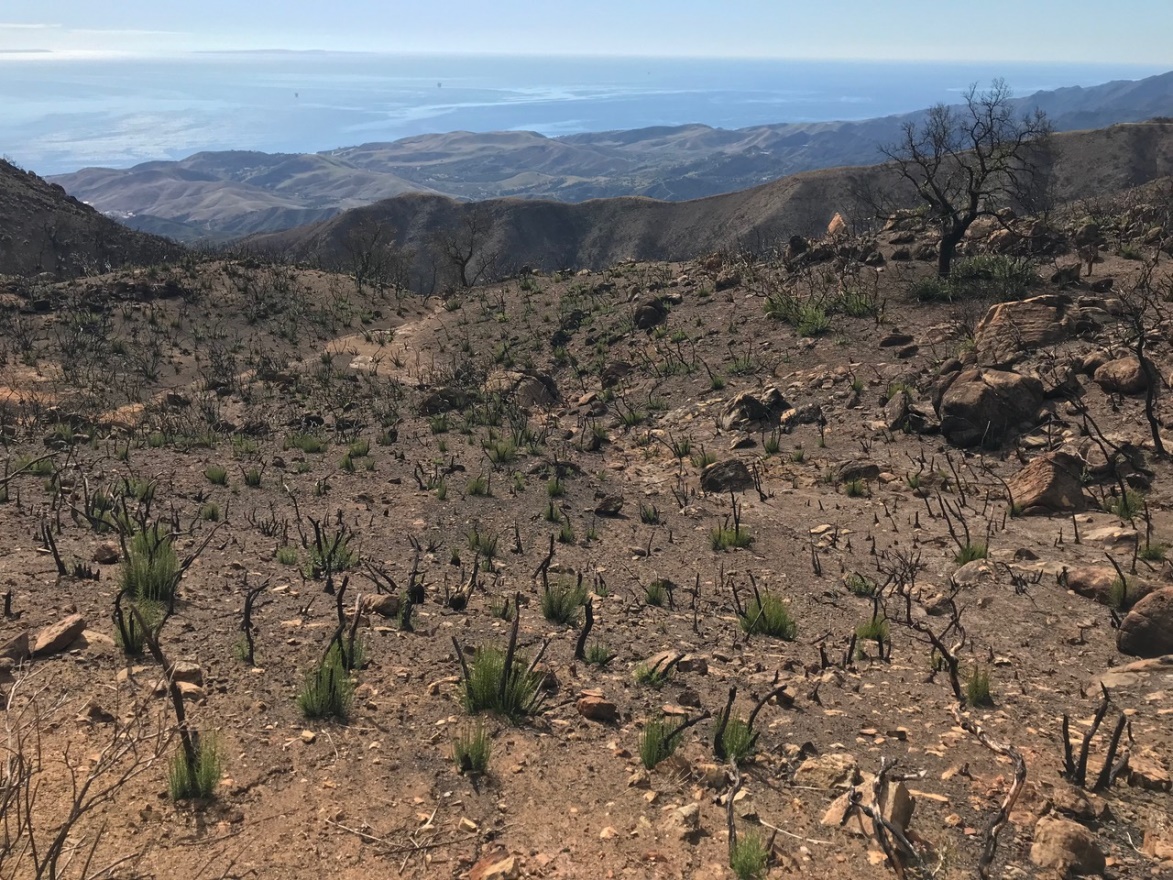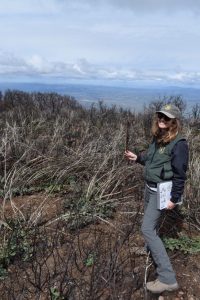Wednesday, May 15: The Causes and Consequences of Changing Fire Regimes
Lecture with Nicole Molinari
Co-Hosted by the Los Olivos Library
Wednesday, May 15, 7:00 p.m.
Los Olivos Community Hall (LOCO)
2374 Alamo Pintado, Los Olivos
Featured photo of chaparral after the Whittier Fire. Photo courtesy of Nicole Molinari
Fire has played an integral role in shaping plant communities across California, yet today fire frequency, size, and severity seem to be steadily increasing across the state. What are the causes and consequences of these changes? To illustrate the complexities associated with this question, we will compare and contrast the historical and current fire regimes in two dominant vegetation types in California: conifer forests and chaparral shrublands. The drivers of changing fire regime (e.g., fire suppression, population growth, drought) within these two vegetation types will also be compared and used as a platform to explore potential solutions to the problem. Lastly, impediments to post-fire vegetation recovery under these new conditions will be discussed.
Nicole Molinari is a vegetation ecologist working for the US Forest Service. She received her MS in Biology from Cal Poly San Luis Obispo, and her PhD in Ecology and Evolution from UC Santa Barbara. Nicole has experience working in grasslands, shrublands, and forests. She has a broad interest in the consequences of human-induced global changes, including the effects of biological invasion, nutrient enrichment, climate change, and altered disturbance regimes on vegetation patterns. Nicole is stationed at the Los Padres National Forest Headquarters, and lives in Goleta with her husband and two boys.











